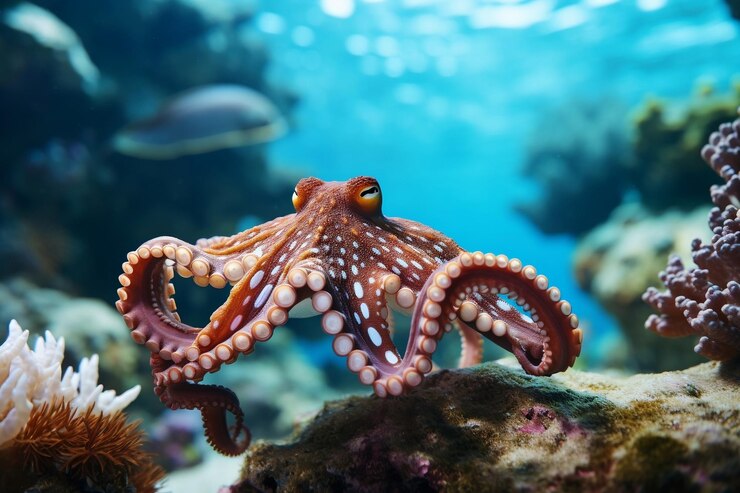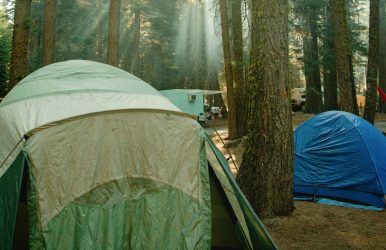Where To Stay Near Lassen Volcanic National Park?
BY Sibashree Sep 5, 2024
The Lassen Volcanic National Park is an underrated hub of geothermal wonders and intriguing landscapes. Endless trails in the park and the rugged beauty make it a favorite of hikers and campers. Do you also want to know where to stay near Lassen Volcanic National Park? This national park has limited lodging options. However, if you are into outdoor pursuits and want to make the most of this national park, the home to the largest plug dome volcano in the world, camping and glamping are the best options for you. This park has a combination of basic and developed campgrounds. Further, you can try backcountry camping to encounter the wilderness. Are you in for the fun? Pack your bags, and find the most adventurous accommodation near Lassen Volcanic Park. Where To Stay Near Lassen Volcanic National Park? Drakesbad Guest Ranch and Manzanita Lake Camping Cabins are two of the most comfortable options for anyone looking for where to stay near Lassen Volcanic National Park. Further, Drakesbad Guest Ranch is the only “hotel-like” lodging facility. However, Drakesbad Guest Ranch will remain closed throughout 2024. It is still under recovery after the rampage of the 2021 Dixie Fire breakout. At the same time, the Manzanita Lake Camping Cabins only remain open from late May to mid-October. So, camping and glamping are the best options if you want to stay near Lassen Volcanic National Park. Camping Near Lassen Volcanic National Park Among the seven campgrounds in the Lassen Volcanic National Park, only four will remain open in 2024. Also, the remaining four are undergoing recovery work, and hence, they are not suitable for lodging or camping. The table below shows a list of camping sites in the Lassen Volcanic National Park and their availability for the season. It’s time to know where to stay near Lassen Volcanic National Park. Name of the Camping Site Availability Butte Lake Single Sites Group Sites Stock Corral Juniper Lake Closed for 2024 Lost Creek Group Open Manzanita Lake Single Sites Camping Cabins Summit Lake North Sites South Sites Southwest Campground Southwest Parking Warner Valley Closed for 2024. Before you choose a campground for you, you must focus on the kind of activity you want to explore. For example, if you want to enjoy the best amenities, kayaking, and take a rejuvenating shower, the Manzanita Lake campground will be the best for you. Further, if you want to enjoy the best hydrothermal activities and are a recluse by nature, the Warner Valley Campground will be an excellent pick for you. Also, the Southwest Campground is the only campground that remains open throughout the year. Amenities Available At Lassen Volcanic Park Camping Sites You can divide the amenities available for Lassen Volcanic Park camping into four categories. So, let’s have a look at the chart below to learn about the amenities in detail. Amenities & Services Availability Campsite Picnic Table Fire Ring Bear-Resistant Storage Locker Hard-Sided Vehicle Campground Spigots (Except Juniper Lake) Drinking Water Sinks (Except Juniper Lake) Flush Toilets Utility Sinks for Dish Washing Trash Receptacles/Recyclables Camper (Manzanita Lake Area) Laundromat Showers Food Supplies Souvenirs from Mid-May through Mid-October Dump Station Accessibility (Manzanita Lake A32 and B9, Butte Lake A6, and North Summit Lake A-1) Wheelchair Restrooms You can get additional camping services at Kohm Yah-mah-nee Visitor Center near the Southwest Campground. Here, you will find camping services, food, and souvenirs. Further, you can get laundromat and shower facilities in the Warner Valley Areas and Juniper Lake from the town of Chester. Backcountry Camping Near Lassen Volcanic Park The major part of the Lassen Volcanic Park is a “designated wilderness.” You will need a wilderness permit to camp in these locations. Further, you will have to follow the “Leave no Trace Principles” to minimize human impact on these camping grounds and keep their natural conditions unadulterated. Under these “Leave No Trace” principles, you must ensure that: You need to do advanced and detailed planning for the backcountry camping. Also, traveling and camping are only allowed on surfaces that are durable. You must dispose of your waste properly. You cannot litter. Avoid touching historical statues and artifacts. Ensure that the campfires you lit have minimized impacts. Be respectful to wildlife. Respect other visitors. Along with adhering to these Leave No Trace Principles, you will also have to abide by the backcountry camping rules and regulations. If you are carrying firearms or weapons, you will have to carry the California Concealed Weapons Permit. You cannot hunt or use Bear Spray in this park. You can use a bear-resistant storage container to keep these wild animals at bay. Moreover, you cannot use a woodfire, bicycles, or pets for backcountry camping. Also, keep your group smaller (less than 10 people) to get permission for backcountry camping. Glamping Near Lassen National Park With changing amenities, camping near Lassen National Park has become more glamorous. There has been a new concept of glamping. It allows you to encounter wilderness with all the amenities indoors. Let’s have a look at the glamping accommodations available. Little House In The Big Woods This is a humble 5-acre glamping accommodation for people who want to know where to stay near Lassen Volcanic National Park. This glamping station has potable water, toilets, and camping facilities. The tariff here starts from $99 per night. Camp Almanor At Big Springs https://www.instagram.com/p/CrCmRT-r2Y0/ Camp Almanor at Big Springs is one of the most luxurious accommodations where your pets can accompany you. As the name suggests, you can cherish the pristine beauty of Lake Almanor from this camp. Further, it has toilets and potable water facilities. However, the rent for this glamping accommodation is quite high, and the tariff starts from $175 per night. Camp Becausewecan In Quincy, California, it is one of the pet-friendly glamping accommodations near Lassen Volcanic Park. Further, this 17-acre private property also has amenities like campfires and potable water. The rent for this accommodation starts from $40 per night. Story Creekside Retreat It is one of the most reasonable glamping accommodations near Lassen Volcanic Park. The best thing about this accommodation is that it has Warner Creek running through it. It is a pet-friendly glamping site, with a tariff starting from $25 per night. Final Words Is there anything else you want to know about where to stay near Lassen Volcanic National Park? Put up a camp or try glamping to make the most of this national park, boasting unique hydrothermal features. You will find all four types of volcanoes here. Also, meadows, forests, and mountain lakes will present the most versatile landscape in front of you. So, get ready to admire the rugged beauty of the park during the daytime and its tranquil beauty at night. Once you come back, don’t forget to share your camping experience with us! Where To Stay Near Lassen Volcanic National Park (FAQs) Can You Camp Free In Lassen Volcanic National Park? No, you cannot camp free in Lassen Volcanic National Park. You will have to pay around $1 to $21 to put up camps at any of the chosen campgrounds. Dry campgrounds without basic amenities like water or flushing toilets come at a cheaper rate. However, if you are looking for free campsites, you must explore the dispersed camping options at the Lassen National Forest. These camping sites do not offer standard amenities. Further, you must adhere to the “No Trace Policy” while leaving the campsites. How Long Should You Stay At Lassen Volcanic Park? You can stay from one to three days in Lassen Volcanic Park based on what kind of trekker or explorer you are. However, if you want to minutely observe the diverse landscape of the park, the entire expedition may take you around a week. On the first day, you can try hiking on the Bumpass Hell Trail. You will encounter various hydrothermal activities on this trail, which is the largest geothermal area in the park. The geothermal water here is green or emerald blue in color. Further, the rocks and soil here have orange or yellow colors because of the minerals present in the hydrothermal water. On the second day, you can visit Kings Creek Falls and enjoy an immersive experience at Lake Manzanita. In addition, you can reserve the night for some essential spiritual and psychological activities such as stargazing. Are you a seasoned hiker? You can keep your third day in the park hiking the Lassen Peak Trail. Also, you can dedicate the 3rd day to know the exotic wildlife at this national park. Remember that it’s home to around 300 species of vertebrates. Do You Need A Permit For Lassen Volcanic Park? You will not need a permit to stay in the Lassen Volcanic Park, provided you are camping on the established campgrounds. Also, a permit is not required when you are hiking in the park. However, if you have plans for backcountry camping, you will need a permit. To collect the wilderness permit, you will have to visit the recreation.gov website. It is the only channel for obtaining the wilderness permit. Further, for the wilderness permit, you will have to pay a non-refundable amount of $6 as an administration fee to recreation.gov. Also, if you are over 16 years old, you will need to pay $5 for each trip. Also read Top 10 Most Popular Paraguay Food That You Must Try. Top 13 Famous Wonders Of India That You Must Visit! [Updated 2024]














